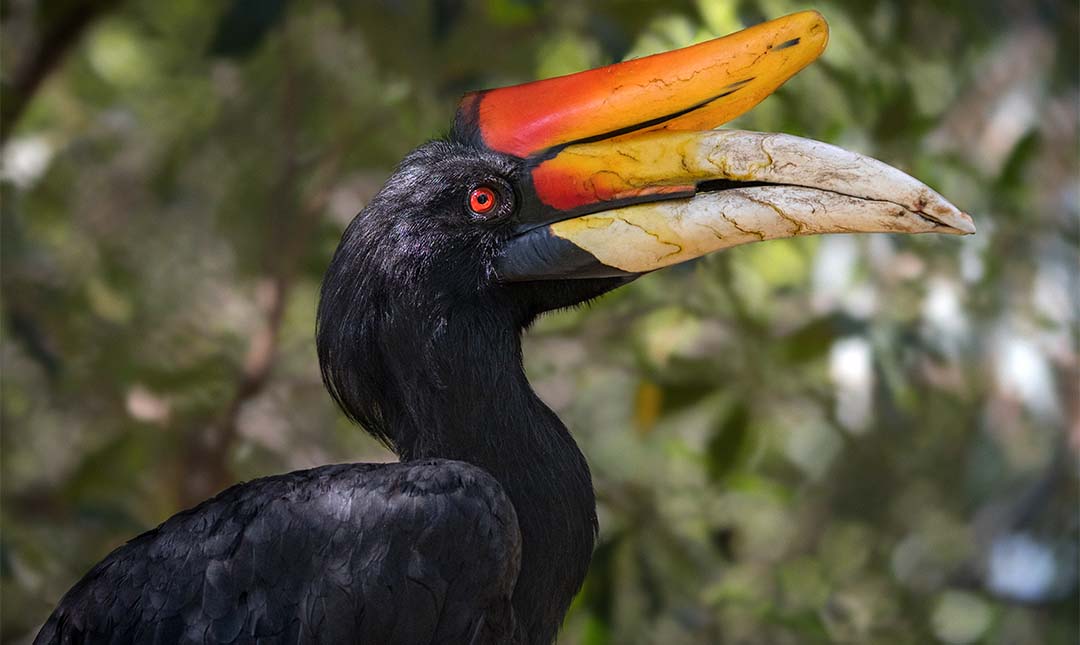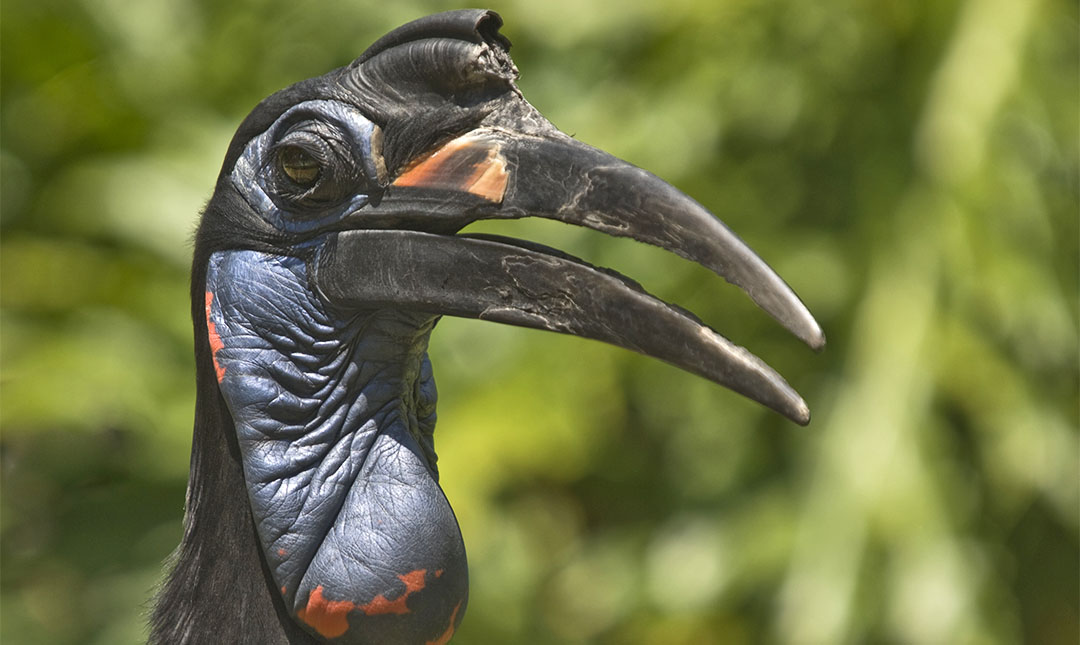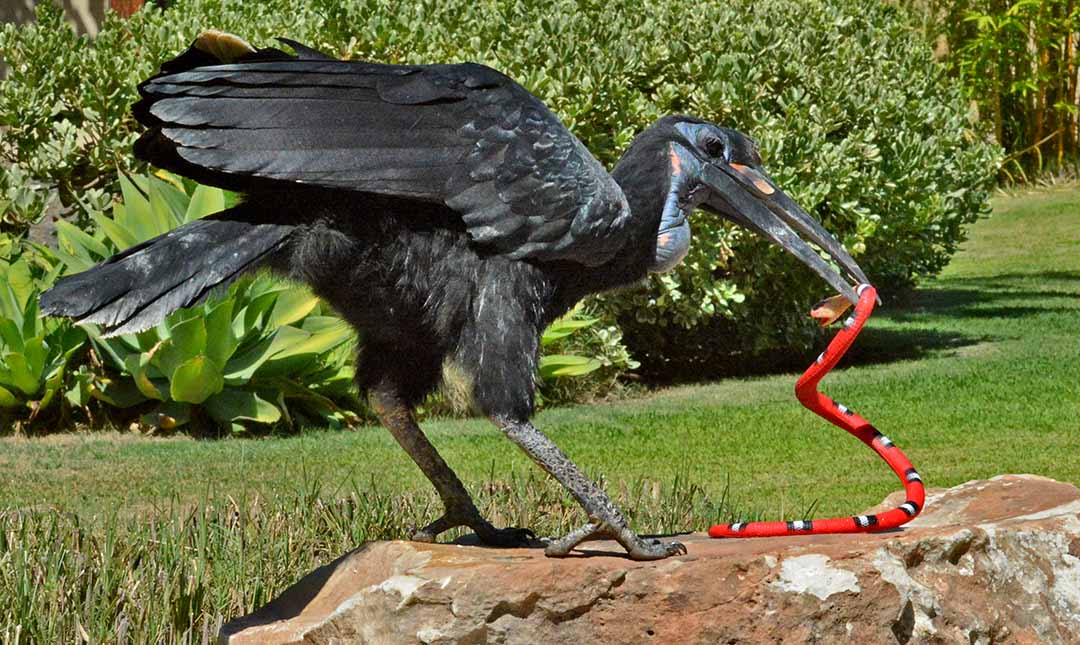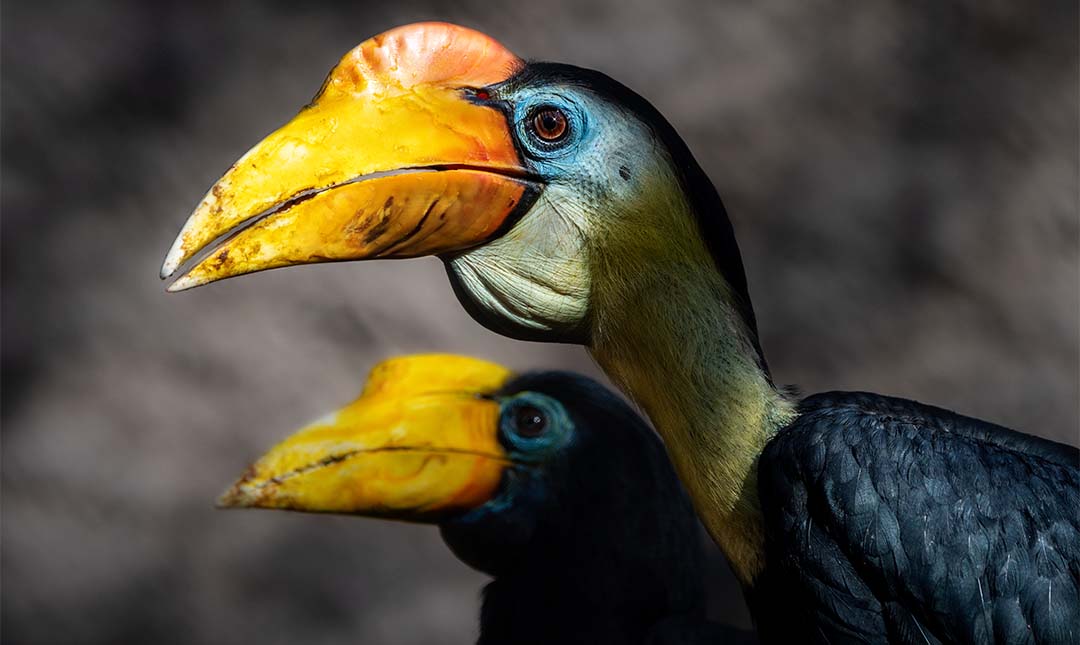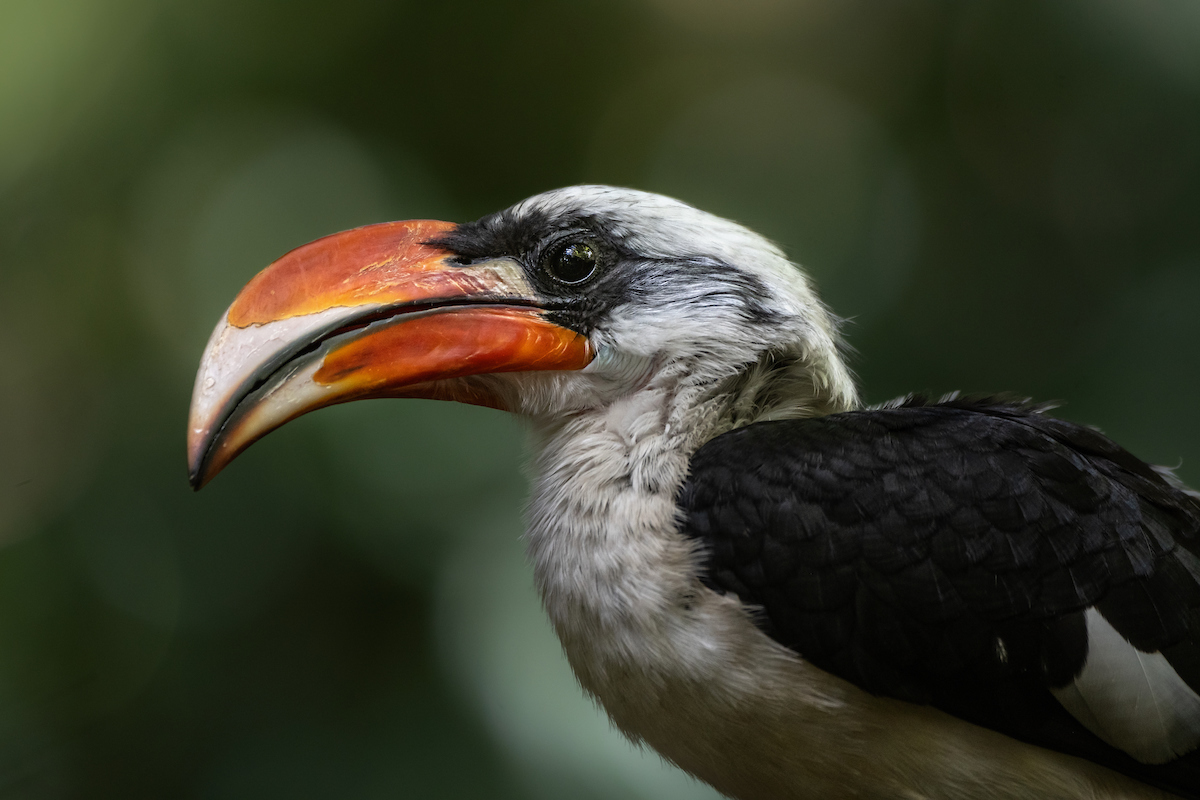About
Hornbills have exceptionally long eyelashes (modified feathers) to keep dirt and debris out of their eyes. Their large beaks are actually light (thanks to a honeycomb-like internal structure) and maneuverable, allowing them the extended reach to access fruit at the ends of long branches. The casque on the beak, characteristic of all hornbills, is a helmet-like structure made of keratin—the same substance as fingernails and hair. Casques are thought to function as resonators that amplify mating calls.
All species of hornbill nest in natural cavities, usually in trees. The female makes the final selection of the nest site and in most species, the female—with the male’s help—closes the entrance, using her bill in a trowel-like fashion to apply a mixture of droppings, mud, and sticky food remains to seal the nest chamber. Often only a narrow slit remains through which the male passes food to the female and chicks (usually between one and four) during the nesting cycle. This prevents the nest from being invaded by predators. From incubation through fledging, the nesting cycle can last as long as 130 days. In the larger species, including Abyssinian ground hornbills, the cavity is not sealed and both parents tend to the chicks.
The Zoo is home to a variety of hornbill species:
- Abyssinian ground hornbill – in the World of Birds Show
- Rhinoceros hornbill – in the Australia section
- Von der Decken’s hornbill – in the Africa section
- Wrinkled hornbill – in the Asia section
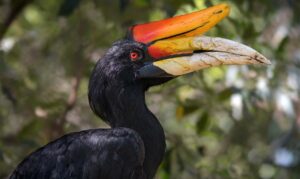
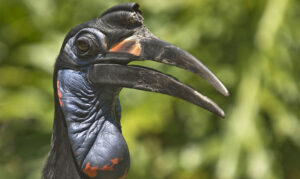
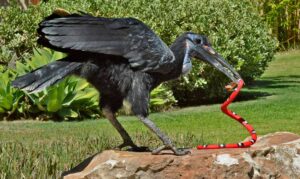
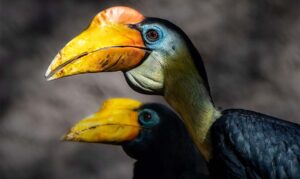
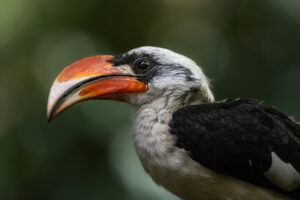
Status
Abyssinian ground hornbill (Bucorvus abyssinicus) – Vulnerable
Rhinoceros hornbill (Buceros rhinoceros) – Vulnerable
Von der Decken’s hornbill (Tockus deckeni) – Least Concern
Wrinkled hornbill (Rhabdotorrhinus corrugatus) – Endangered
Habitat
Hornbills inhabit evergreen forests and open savanna woodlands of sub-Saharan Africa and southeast Asia.
Diet
These birds are opportunistic feeders, consuming fruit, insects, tortoises, lizards, small amphibians, mammals, and birds as well as carrion.
Physical Characteristics
Hornbills are 12 to 39 inches long and weigh between three ounces and nine pounds, depending on the species. Wingspans can reach up to five feet. Males are generally larger than females. Their lifespan in the wild in unknown, but in human care, hornbills can live more than 40 years.

